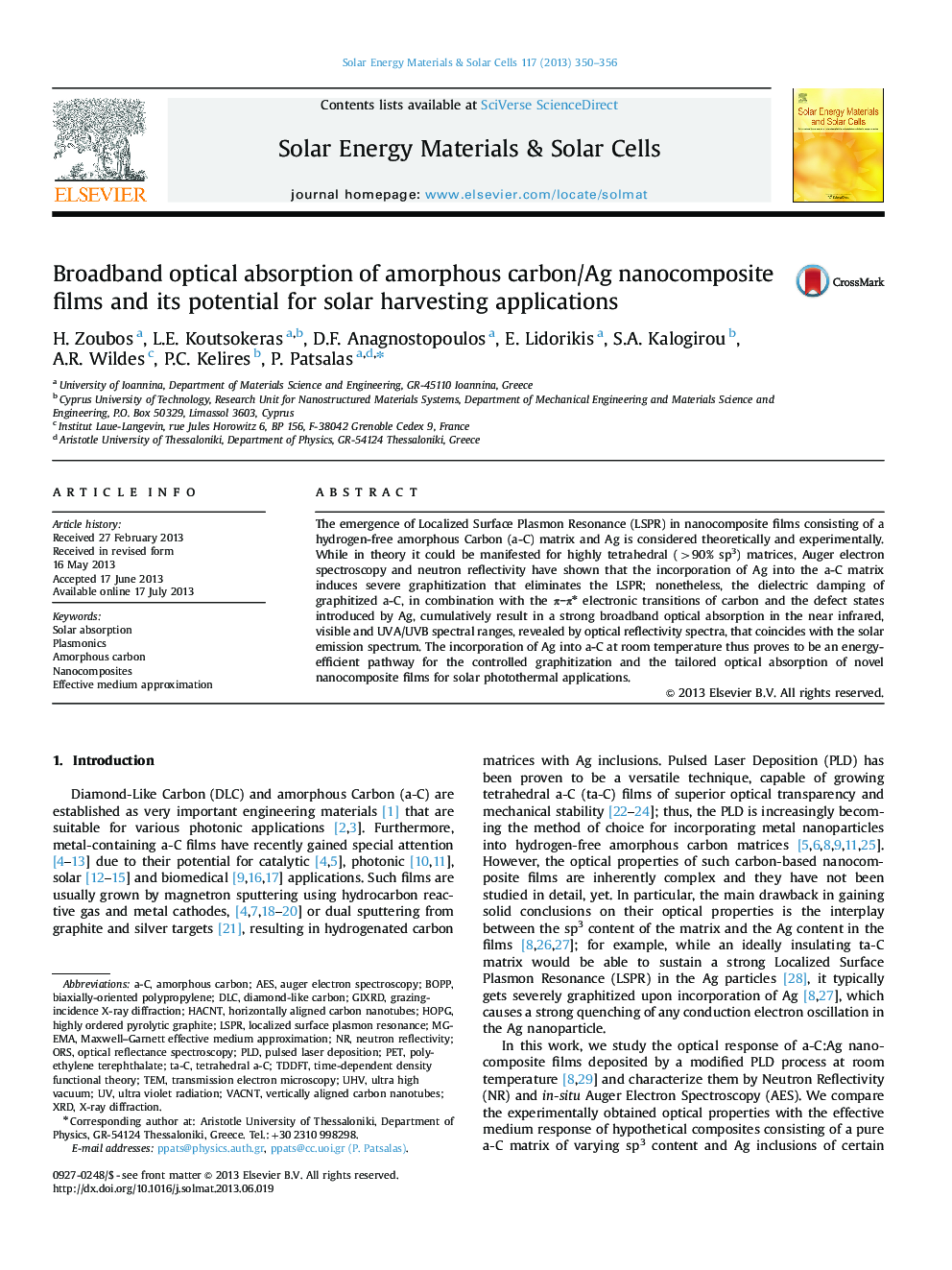| Article ID | Journal | Published Year | Pages | File Type |
|---|---|---|---|---|
| 6536303 | Solar Energy Materials and Solar Cells | 2013 | 7 Pages |
Abstract
The emergence of Localized Surface Plasmon Resonance (LSPR) in nanocomposite films consisting of a hydrogen-free amorphous Carbon (a-C) matrix and Ag is considered theoretically and experimentally. While in theory it could be manifested for highly tetrahedral (>90% sp3) matrices, Auger electron spectroscopy and neutron reflectivity have shown that the incorporation of Ag into the a-C matrix induces severe graphitization that eliminates the LSPR; nonetheless, the dielectric damping of graphitized a-C, in combination with the ÏâÏâ electronic transitions of carbon and the defect states introduced by Ag, cumulatively result in a strong broadband optical absorption in the near infrared, visible and UVA/UVB spectral ranges, revealed by optical reflectivity spectra, that coincides with the solar emission spectrum. The incorporation of Ag into a-C at room temperature thus proves to be an energy-efficient pathway for the controlled graphitization and the tailored optical absorption of novel nanocomposite films for solar photothermal applications.
Keywords
PLDTDDFTDLCORSLSPRUHVHOPGGIXRDBOPPUltra violet radiationDiamond-like carbona-CAesta-CNeutron reflectivityTemEffective medium approximationsolar absorptionUltra high vacuumLocalized surface plasmon resonanceAuger electron spectroscopyPulsed laser depositionTransmission electron microscopyvertically aligned carbon nanotubesNanocompositesTime-dependent density functional theoryPETX-ray diffractionXRDGrazing-incidence X-ray diffractionPlasmonicsAmorphous carbonHighly ordered pyrolytic graphite
Related Topics
Physical Sciences and Engineering
Chemical Engineering
Catalysis
Authors
H. Zoubos, L.E. Koutsokeras, D.F. Anagnostopoulos, E. Lidorikis, S.A. Kalogirou, A.R. Wildes, P.C. Kelires, P. Patsalas,
